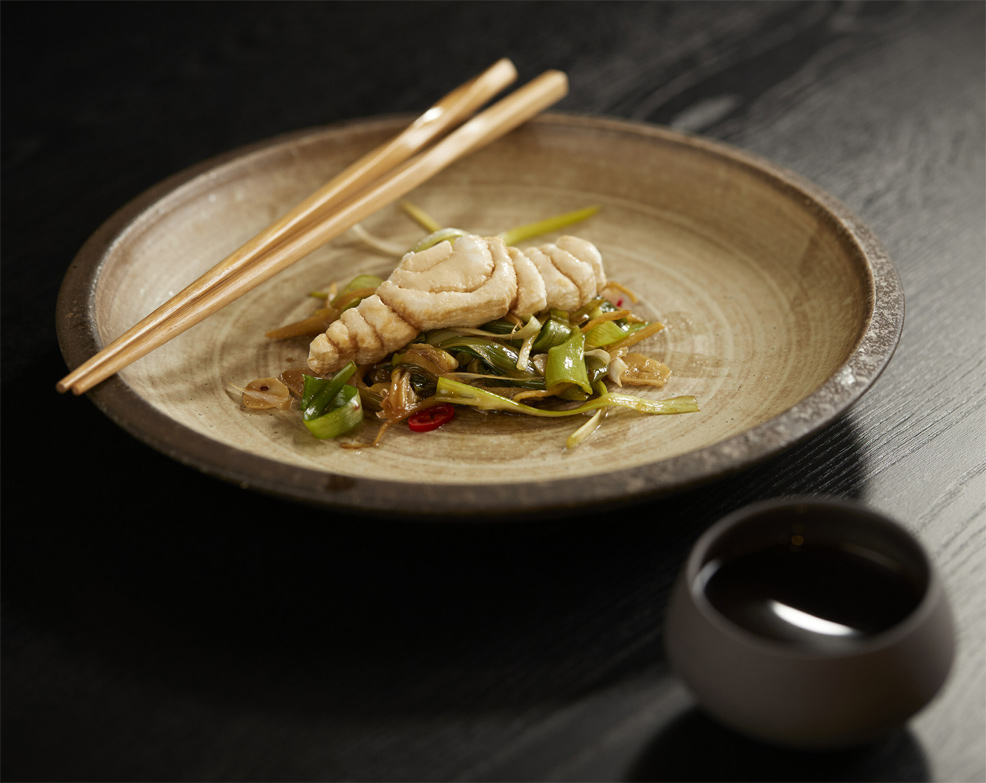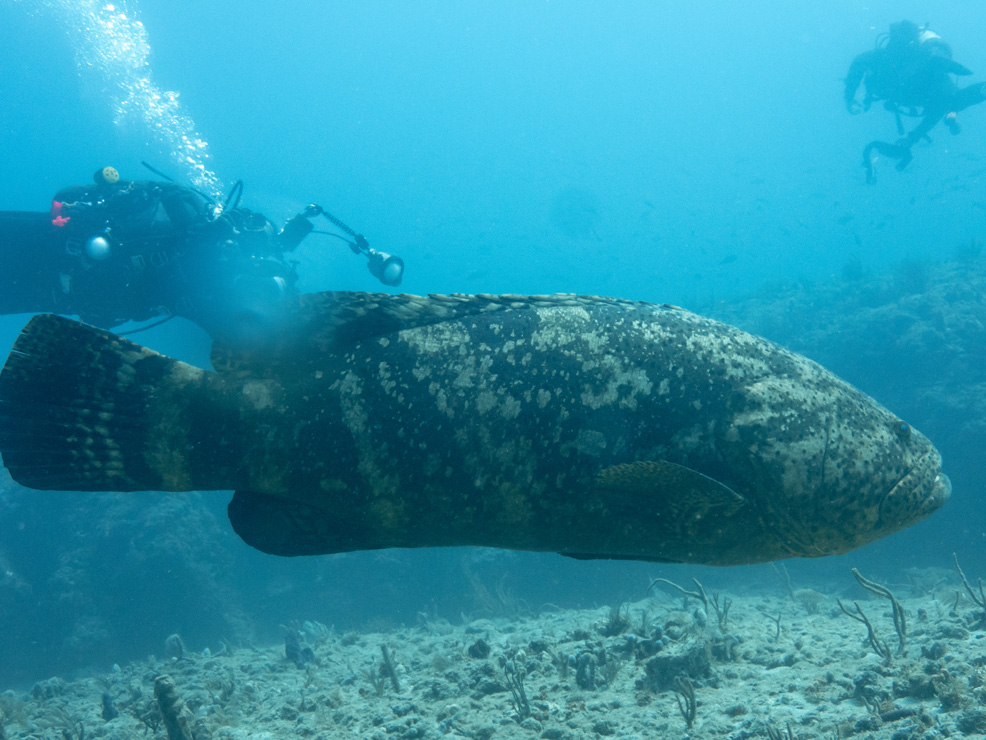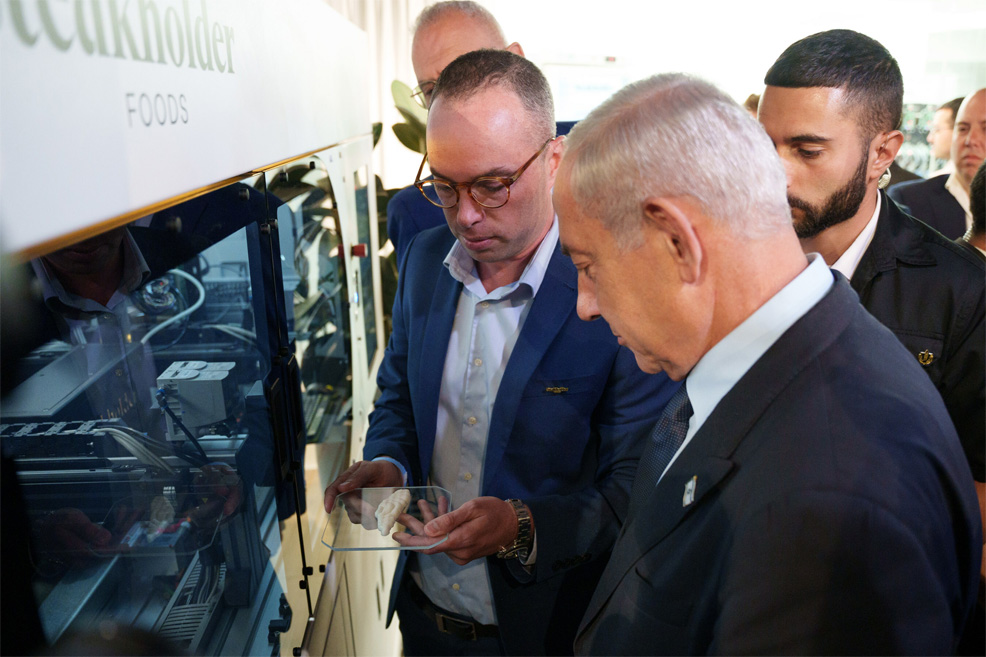
26th April 2023 World's first cultivated grouper fillet Israeli company Steakholder Foods has announced that it successfully 3D printed the first ready-to-cook cultivated grouper fish product.
The grouper is a species of fish that belongs to the subfamily Epinephelinae and is known for its large size and unique appearance. There are various species found in different parts of the world, including the Gulf of Mexico, the Caribbean, the Mediterranean, and the Indo-Pacific region. The largest is the goliath grouper (pictured below) which can reach up to 2.5 m (8.2 ft) in length and weigh as much as 400 kg (882 lbs). Some species of grouper are listed as endangered or vulnerable on the International Union for Conservation of Nature (IUCN) Red List. This includes the goliath grouper, which is now critically endangered, and the Atlantic goliath grouper, which is vulnerable. Overfishing, habitat destruction, and other human activities have contributed to declining populations, leading to conservation concern. Sustainable fishing practices – such as catch limits, size limits, seasonal closures, and marine protected areas – are essential to the conservation of groupers and other fish. Alongside these measures, the world may soon have access to a technological innovation that reduces the need for wild-caught fish in food production. Cultivated fish meat, also known as cell-based seafood or lab-grown fish, is made using cellular agriculture techniques to grow fish cells in a laboratory setting. The resulting meat is similar in texture and taste to conventionally harvested fish, but without the need to catch real fish. In the last few years, several companies have demonstrated the ability to grow fish food products like salmon and yellowtail amberjack. Now, the grouper can be added to the list, thanks to Israeli company Steakholder Foods.
Steakholder Foods recently announced a major milestone. Collaborating with Singaporean company Umami Meats – which supplied the cells – it used customised bio-inks to successfully print a cultivated grouper fillet. This marks a significant step towards the commercialisation of its 3D bio-printer and opens the door to potentially many more collaborations. Unlike fully cultivated meat products, which still need incubation and maturation after printing, the grouper fish product is ready to cook after printing, thanks to Steakholder Foods' unique technology that mimics the flaky texture of cooked fish. To celebrate this achievement, Steakholder Foods held a tasting event in its Israel facilities. This featured a "grouper fish chef's table", with piscine delicacies prepared by the company's chef, Moran Lidor, including Singaporean-style and Israeli-style signature fish dishes. This followed a visit by Benjamin Netanyahu, who also watched the fish being printed first-hand and tasted the prototype, becoming the first Prime Minister ever to taste 3D-printed cultivated fish.
"We're excited to be working with Umami Meats to develop 3D-printed structured fish products, which have the same great taste and texture as traditionally caught fish, without harming the environment," said Arik Kaufman, CEO of Steakholder Foods. "With an estimated size of $110 billion and projected growth of 4% annually in the near future, the seafood market is a long-time part of our vision for introducing sustainable solutions that increase food security. Having created a customised bio-ink that works effectively with Umami's cells and optimised the taste and texture to meet the high standards of consumers, we anticipate expanding our collaborations to a greater variety of species with additional partners." "We are delighted to have produced the world's first whole fillet cultivated fish in partnership with Steakholder Foods," said Mihir Pershad, CEO of Umami Meats. "In this first tasting, we showcased our cultivated product that flakes, tastes, and melts in your mouth – exactly like excellent fish should. In the coming months, we intend to announce our plans for bringing this world-class cultivated fish to the market." Umami Meats has been recognised as a semi-finalist in XPRIZE Feed the Next Billion – a multi-year, $15 million competition to produce chicken breast or fish fillet alternatives that replicate or outperform conventional meat products in access, environmental sustainability, animal welfare, and nutrition, as well as both taste and texture.
Comments »
If you enjoyed this article, please consider sharing it:
|









